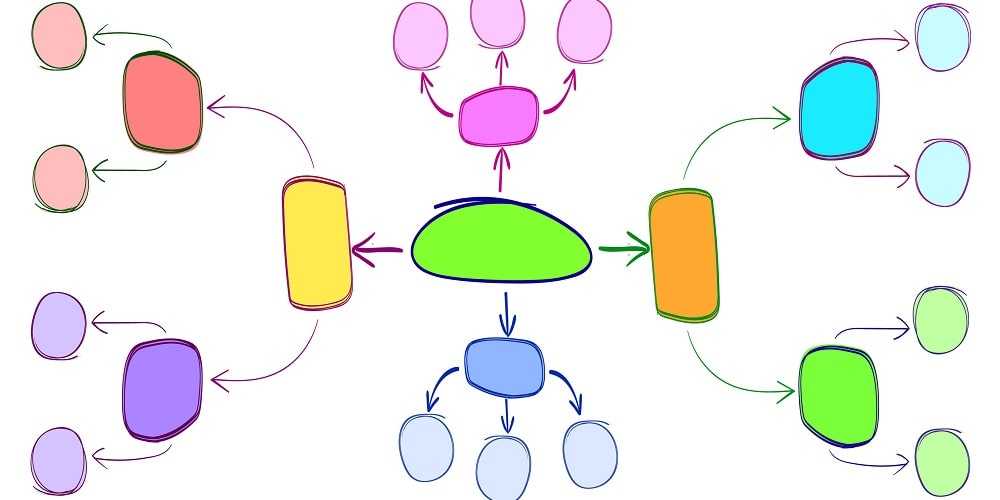Tag: Data Collection

Variable Data: Seeing the Change in Your Data
Published:Data is just data, right? Hardly! We hear about discrete data, attribute data, continuous data, and variable data. Let’s unravel some of the confusion.
Read more »
Subjective Rating vs. Ranking: Which Is the Better Data Collection Method?
Published:Subjective ratings and rankings can be used in a variety of applications, such as assessing job performance, gauging customer satisfaction, and monitoring the morale of your workforce. Find out more about this Six Sigma term.
Read more »
Tips for Interpreting Discrete Data: Understanding Category Variables
Published:Understanding discrete data will give you yet another tool for understanding your process measure or outcome. This article will explain the tips and traps of using discrete data in process improvement.
Read more »
Attribute Data: Quantifying the Qualitative
Published:You will often see attribute data and discrete data being used interchangeably. At some level, they are similar. But, if we dive a little deeper, you’ll see that there’s a bit more distinction than meets the eye.
Read more »
Big Data vs. Small Data: Which Is Right for Your Business?
Published:Big Data vs. Small Data Big data vs. small data, which should you be paying attention to? Data is generated throughout an organization. You’re gathering it when selling products, producing things, and even just interacting with customers. However, when we start talking about data, the notion of big data and small data enter […]
Read more »
The Importance of Implementing Effective Metrics
Published:When a company promises and delivers on quality, there is a good chance that customer satisfaction and retention will be high. But paving the road to success depends on companies being well-informed about their own business. They achieve that knowledge by developing and utilizing effective metrics. Why Do We Need Them? Metrics are […]
Read more »
Case Study: Using Six Sigma in a Non-Six Sigma Culture
Updated:Anyone who has worked in manufacturing has probably experienced some level of finger-pointing when shipments fall short of expectations. Though there could be multiple reasons for a missed customer delivery, somehow it is always the other department’s fault. In extreme circumstances, several months of missing targets without effectively defining the root causes and addressing them […]
Read more »
Measurement System Redesign and Innovative Data Management
Published:A multinational paper company wanted to reduce its cost of poor quality. The company recognized an opportunity to use Six Sigma concepts to minimize variability in its processes.
Read more »
Real-time Feedback Changes the Game
Published:Efficiency is in everyone’s interest. However, achieving it is heavily dependent on the quality and timeliness of crucial performance data. Live, real-time information is crucial for any manufacturing business. Waste benefits nobody, whether it is a waste of materials, time or energy. … One of the things that I have learned in manufacturing is that the […]
Read more »
VOC: Comparing Reactive Data and Proactive Data
Published:Collecting data – be it voice of the customer or otherwise – requires a plan. Details of the plan should include what data to collect, how to get the information, where the information will come from and so on. Before any of these details are defined, however, the first step is to identify what a […]
Read more »
Gemba Walks Come to Life at Fairbanks Morse Engine
Published:Editor’s note: In a previous article, author Lindquist describes what a gemba walk is. Here he presents three examples of gemba walks. Gemba walks at Fairbanks Morse Engine demonstrate the importance of the sometimes-overlooked basics of process improvement. Case Study One Single Process – Pama Machining Center Observation: The objective of a series of events […]
Read more »
The Many Sides of a Gemba Walk
Published:Editor’s note: A follow-up article features three specific examples of gemba walks. With so many tools available to a continuous improvement professional, it is easy to get overwhelmed and consequently focus on a narrow grouping of tools. Experience expands the practitioner’s toolbox, but sometimes it is just as important to return to the foundations to […]
Read more »
Help with a Future iSixSigma Article on Gage R&R
Published:Hello iSixSigma readers! We are working on an article about gage R&R and need your help with data collection for analysis. What we need: Raw data itself (either 5-part or 10-part analyses including operators, parts, trials and measurements) The tolerance spread Is this one- or two-sided tolerance What we would like: Gage family information (e.g., […]
Read more »
Mind Mapping: A Simpler Way to Capture Information
Published:Reducing wait times is a perennial challenge for the service industry, particularly if you haven’t rooted out all the causes for the delays. The mind mapping visualization tool can help you make sense of large volumes of interconnected data and fast-track implementation of Lean Six Sigma.
Read more »
Digging for Data: Insurance Companies Strive to Improve
Published:Based on experience with property and casualty insurers (P&C), one of the biggest profitability drivers is the expense incurred staffing and settling claims. Many P&C insurers struggle with timely and efficient claims processing. In working with P&C companies consulting groups found three common challenges that project teams must address to improve the overall claims settlement […]
Read more »
Building a Sound Data Collection Plan
Published:Black Belts and Six Sigma practitioners who are leading DMAIC (Define, Measure, Analyze, Improve, Control) projects should develop a sound data collection plan in order to gather data in the measurement phase. There are several crucial steps that need to be addressed to ensure that the data collection process and measurement systems are stable and […]
Read more »
Enlist Process Owners to Survive an Absence of Data
Published:The beauty of Six Sigma, over other decision-making strategies is that it is, by nature, data driven – it involves making decisions backed by evidence. In the absence of data, then, what good is Six Sigma? A Black Belt without data is like a navigator without a compass; finding north becomes complicated, but not impossible. […]
Read more »
Improving Staff Scheduling at Providence Health System
Published:As with most hospitals, labor is the largest budget expense at the Providence Alaska Medical Center (PAMC) in Anchorage. But benchmarking indicated that staff utilization at PAMC, a part of the Providence Health System, was above the 75th percentile of the national average. To remedy this, in October 2003, a multidisciplinary team (nursing, leadership, finance […]
Read more »
Data Management Plans Can Improve Collection/Validation
Published:Companion Article This is one of two articles by David Wetzel that explore the value of developing a data management plan as the intial step in the Measure phase of the Six Sigma DMAIC methodology. The other article is “Data Management Plans Can Reduce Project Cycle Time.” Understanding data and defining process paramaters (input) or […]
Read more »
Using Lean Six Sigma Measurement Tools in Maintenance
Published:Lean Six Sigma is widely used in production, but it can just as easily be applied to maintenance. Here’s how to implement a measurement system using data to identify root causes, prioritize workloads and drive improvements in a maintenance operation.
Read more »
Help for Project Leaders: Advanced Data Door Worksheet
Published:At the Measure phase, improvement project leaders are confronted with the question: What is the most effective, efficient way to identify the data needed and to perform analysis of the data during the Measure and Analyze phases of the DMAIC method?
Read more »
3 Ways to Speed Up Data Collection in Financial Service Processes
Published:In any financial service process that is being studied for the first time, it’s common for Six Sigma teams to spend one-third to one-half of their project time on data collection alone. Here are three tips that can help you get off to a faster start.
Read more »